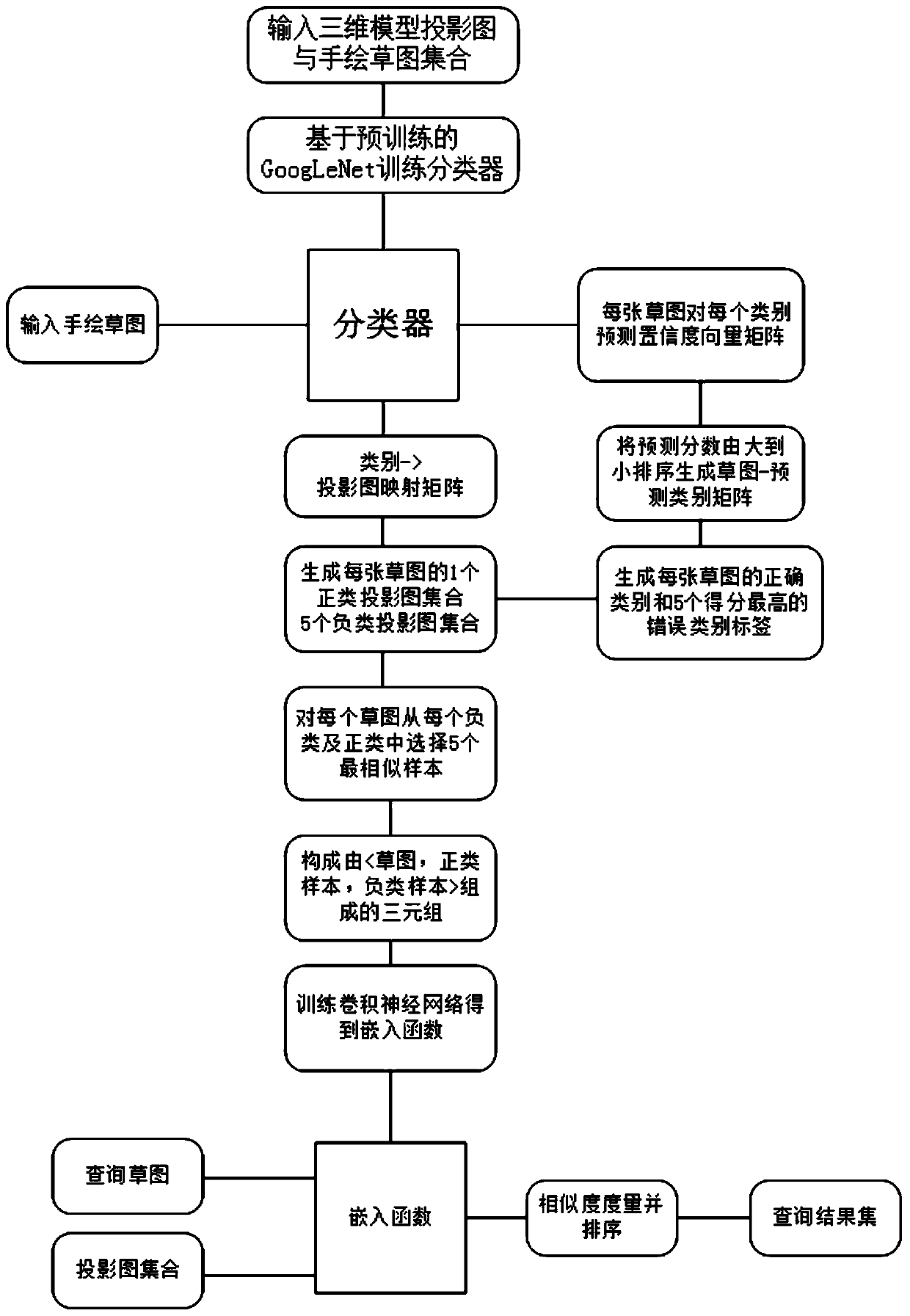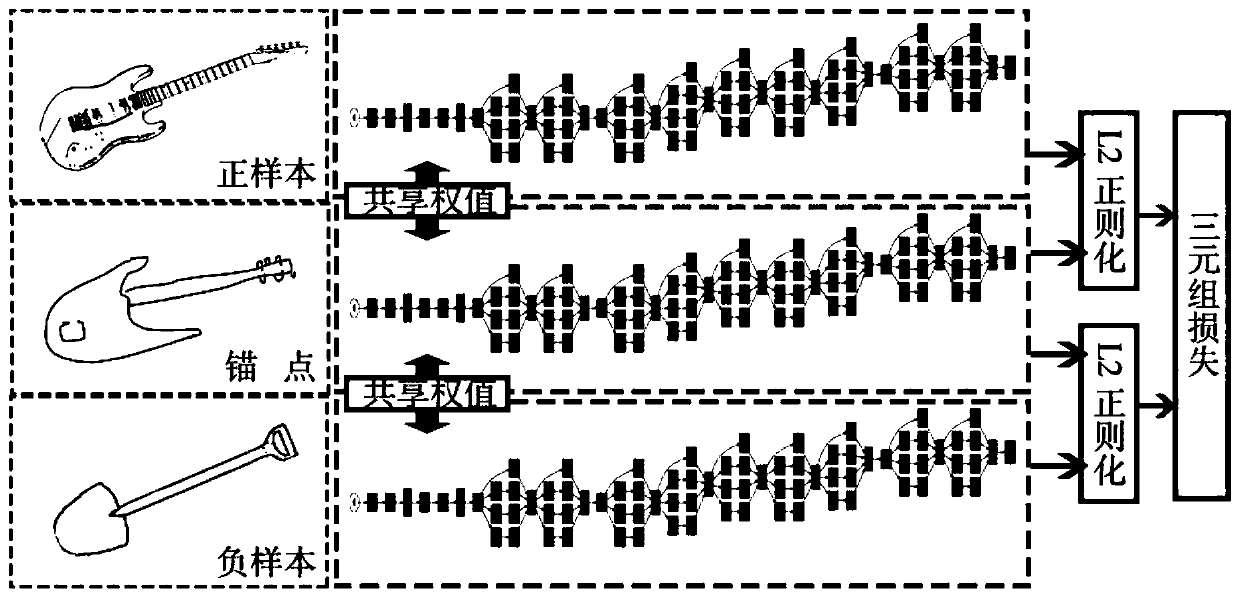3D Model Retrieval Method Based on Deep Convolutional Neural Network
A three-dimensional model, neural network technology, applied in the field of computer vision, can solve the problem of weak generalization ability of the algorithm, difficult to expand to unknown data sets, etc.
- Summary
- Abstract
- Description
- Claims
- Application Information
AI Technical Summary
Problems solved by technology
Method used
Image
Examples
Embodiment 1
[0059] This embodiment provides a three-dimensional model retrieval method based on a deep convolutional neural network, including the following steps:
[0060] Step 1, set the 3D model database M={m 1 ,m 2 ,...,m n};
[0061] This embodiment selects the SHREC'13 data set;
[0062] Step 11, set the unit spherical triangular mesh U={V, T}, V is a triangle vertex set, and T is a triangle set;
[0063] Step 12, randomly select d vertices from the triangle vertex set V as seed vertices, and the d seed vertices form the seed vertex set Seeds,
[0064] Step 131, using all seed vertices in Seeds as the seeds of the Lloyd relaxation algorithm to obtain d Voronoi cells whose centers are respectively Cent 1 , Cent 2 ,...,Cent d ;
[0065] The Lloyd relaxation algorithm adopted in this embodiment is: Lloyd S. Least squares quantization in PCM [J]. IEEE transactions on information theory, 1982, 28 (2): 129-137.
[0066] The method used in this embodiment to calculate the center...
Embodiment 2
[0109] On the basis of Embodiment 1, this embodiment also includes:
[0110] Step 6, set the hand-drawn sketch to be tested as x s ;
[0111] Step 61, adopt the embedding function E(x) to convert x s Embedded in the Euclidean feature space, get x s The feature point E(x in the Euclidean feature space s );
[0112] Step 62, search and test the hand-drawn sketch in the Euclidean feature space as x s The feature point set F of the projection map with the same category label, calculate each feature point in F and feature point E(x s ) between the Euclidean distance;
[0113] Step 63, select the model corresponding to the first K projection map feature points with the smallest Euclidean distance as the hand-drawn sketch x to be tested s The closest K models.
PUM
 Login to View More
Login to View More Abstract
Description
Claims
Application Information
 Login to View More
Login to View More - R&D
- Intellectual Property
- Life Sciences
- Materials
- Tech Scout
- Unparalleled Data Quality
- Higher Quality Content
- 60% Fewer Hallucinations
Browse by: Latest US Patents, China's latest patents, Technical Efficacy Thesaurus, Application Domain, Technology Topic, Popular Technical Reports.
© 2025 PatSnap. All rights reserved.Legal|Privacy policy|Modern Slavery Act Transparency Statement|Sitemap|About US| Contact US: help@patsnap.com



